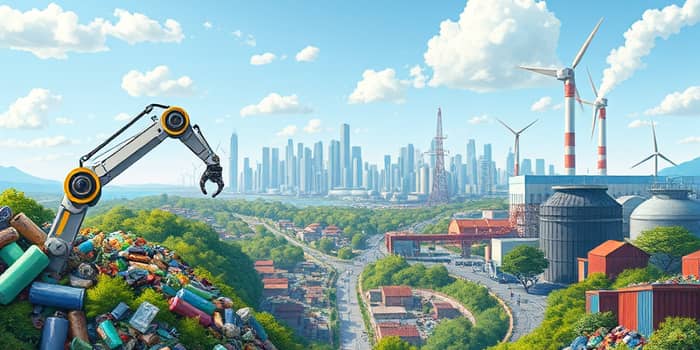
In an era of overflowing landfills and mounting environmental costs, the idea of waste as a mere burden is shifting. Today, bold innovations and strategic policies are transforming discarded materials into sources of profit, energy, and social advancement. This comprehensive exploration reveals how turning trash into treasure can reshape economies, protect ecosystems, and uplift communities.
Every year, humanity produces more than 2.01 billion tonnes of municipal waste, a figure projected to swell to 3.4 billion tonnes by mid-century. Of that, roughly 46 percent comprises organic matter, which in uncontrolled settings emits methane and accelerates climate change. Poor management not only costs the global economy an estimated $13 billion annually in ocean cleanup, but also heightens public health risks, floods infrastructure, and drives 5 percent of greenhouse gas emissions.
Yet this daunting problem carries a hidden promise: each ton of waste contains raw materials, nutrients, or energy potential waiting to be reclaimed. The emerging waste-to-wealth paradigm reframes garbage as a reservoir of opportunity.
Groundbreaking innovations are the linchpin of resource recovery. From high-tech sorting robots to biological reactors, the field is advancing rapidly.
These methods form a tapestry of solutions capable of addressing multiple waste streams:
Regions around the world are pioneering distinctive approaches that illustrate the versatility of the waste-to-wealth model.
The Nordic Model in Denmark, Sweden, and Norway marries strict waste hierarchies with cutting-edge recovery, emphasizing reduction and recycling before energy conversion. In Ontario, Canada, a mandatory deposit-return program has slashed landfill inputs, stimulated local manufacturing, and provided clear financial incentives for households.
Meanwhile, numerous low- and middle-income nations harness community-based buy-back centers. These small-scale operations not only enhance recycling rates and supply chains but also deliver vital income to marginalized populations, despite persistent infrastructure and funding challenges.
Effective governance is the backbone of waste-to-wealth transformation. Policies must encompass robust asset tracking, compliance with certified recyclers, and incentives such as tax credits or subsidies. Deposit-return schemes, landfill bans on organics, and extended producer responsibility regulations drive higher recovery rates.
International collaboration further accelerates progress. Sharing best practices, harmonizing standards, and financing cross-border waste infrastructure can narrow the divide between high-income and emerging economies.
Looking ahead, the integration of AI-powered predictive analytics for waste management and expansion of closed-loop supply chains promise continuous value extraction. Emerging markets for secondary raw materials and innovative financing mechanisms will enable circular economies to flourish.
The waste-to-wealth paradigm represents more than a technical fix; it is a catalyst for systemic change. Governments, businesses, and citizens each play a vital role. By investing in technology, strengthening policies, and fostering inclusive models, we can turn a global crisis into an unprecedented opportunity.
As we embrace this transformation, we unlock cleaner cities, resilient industries, and thriving communities—proving that one man’s trash truly can become another’s treasure.
References





